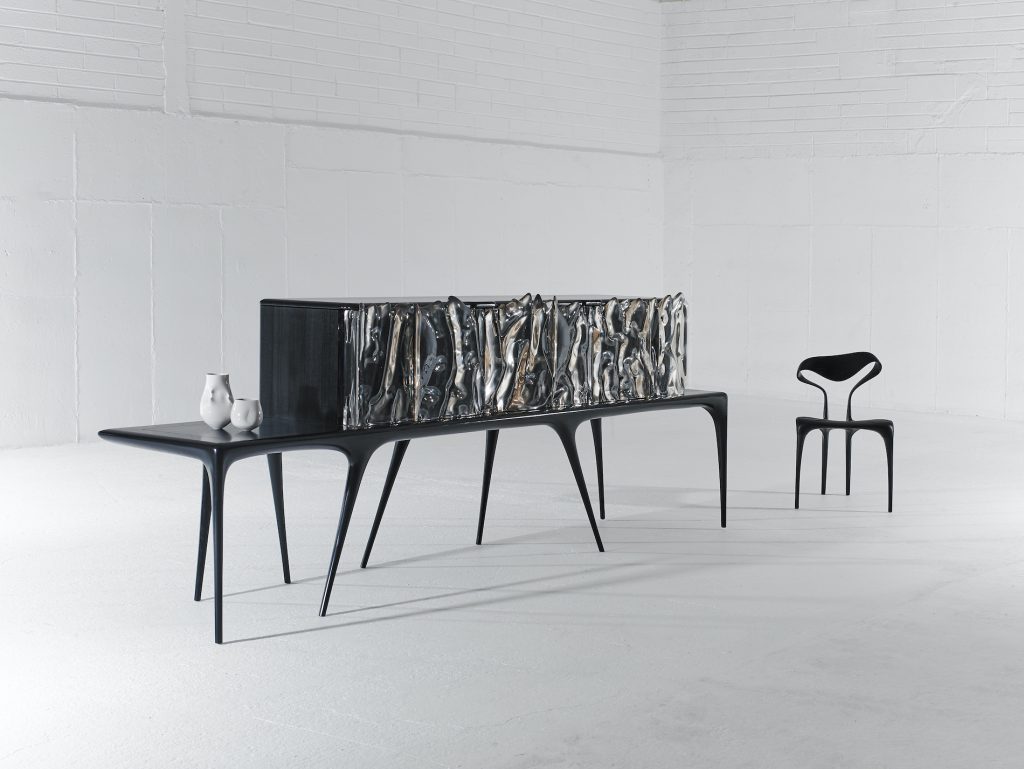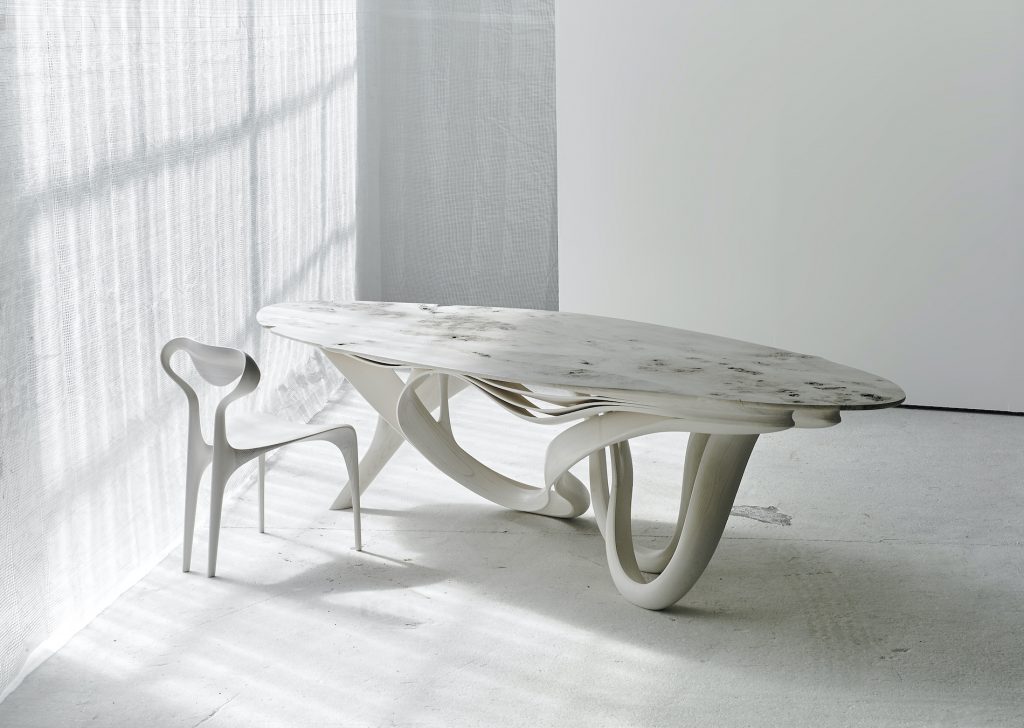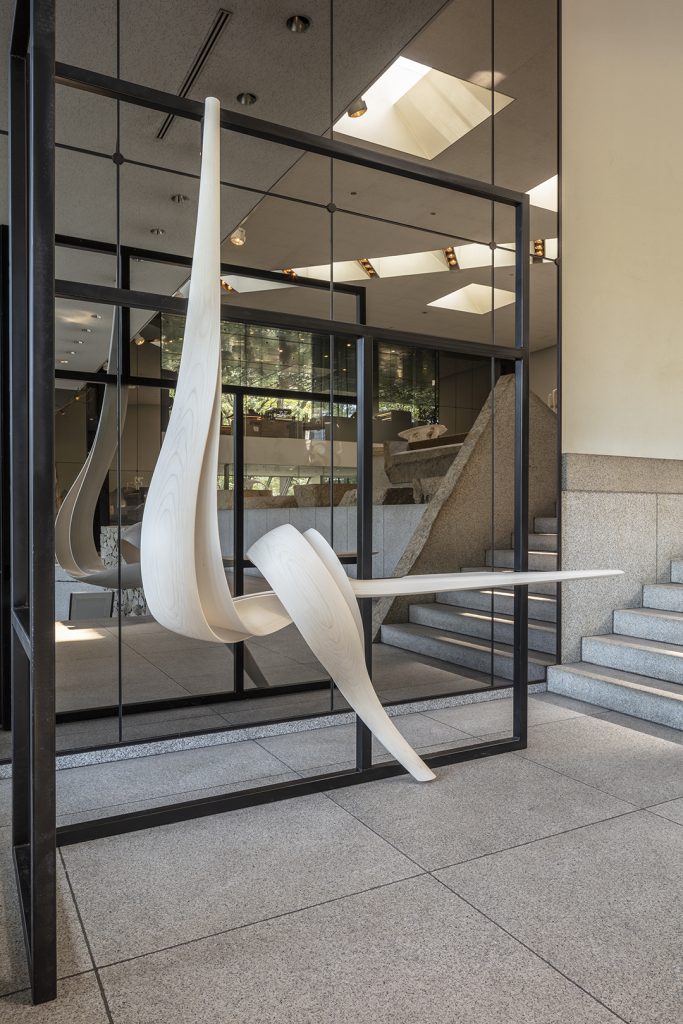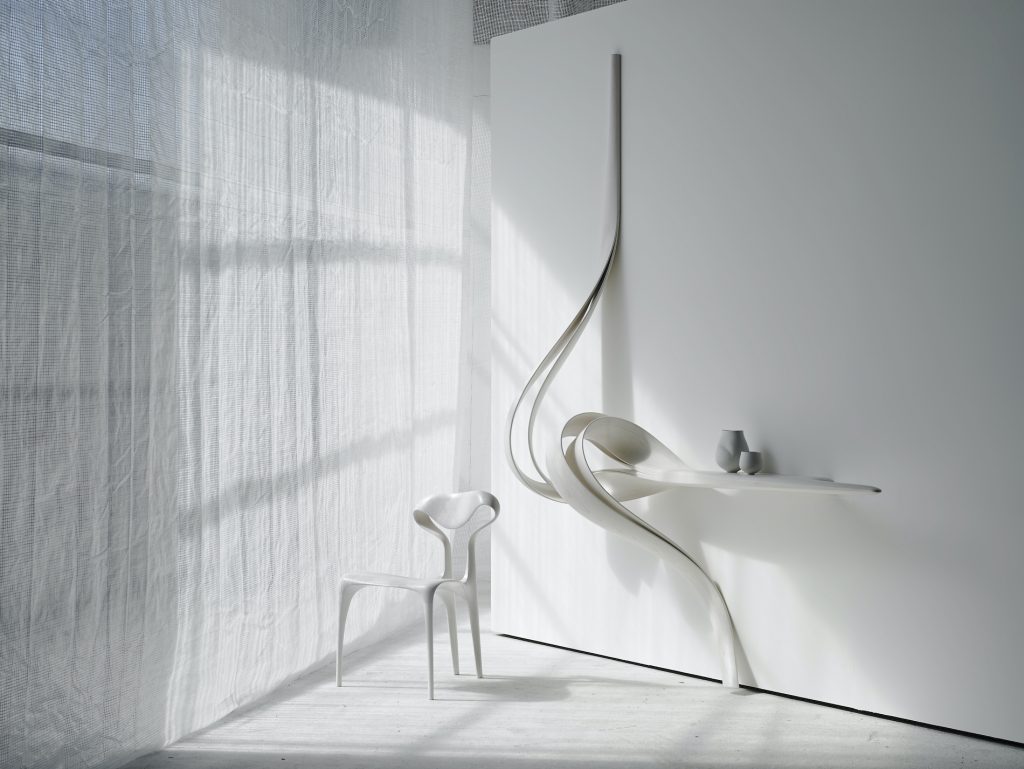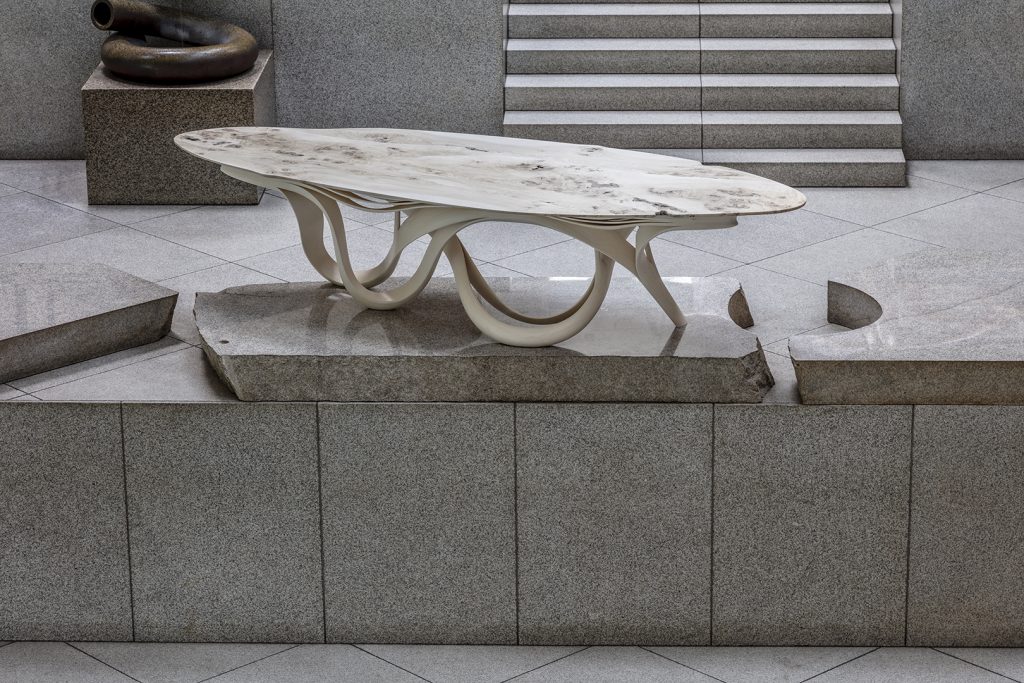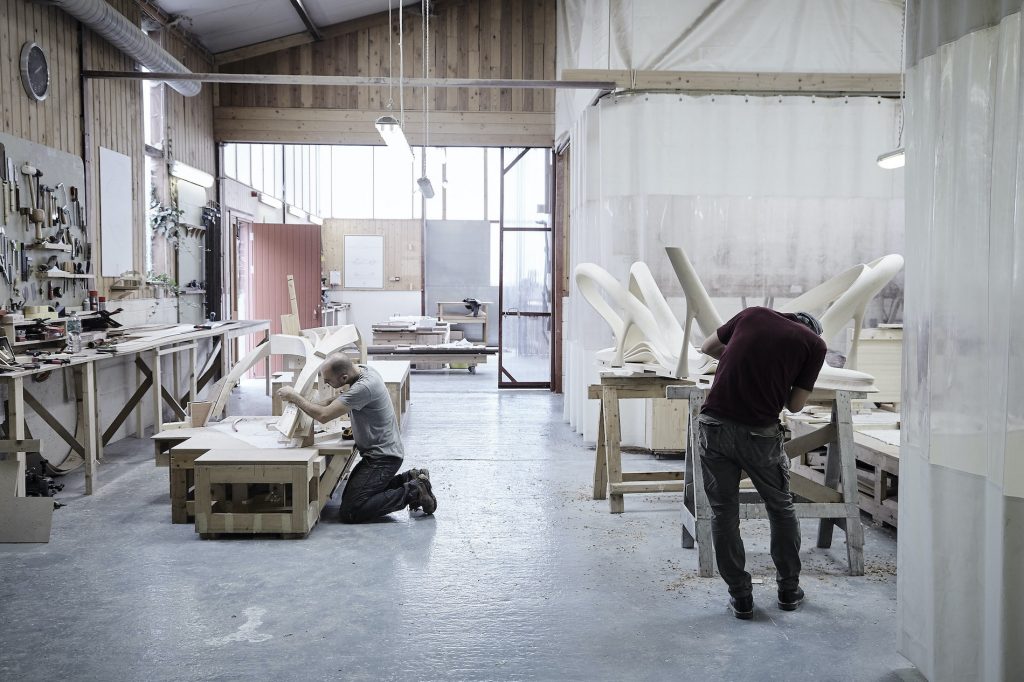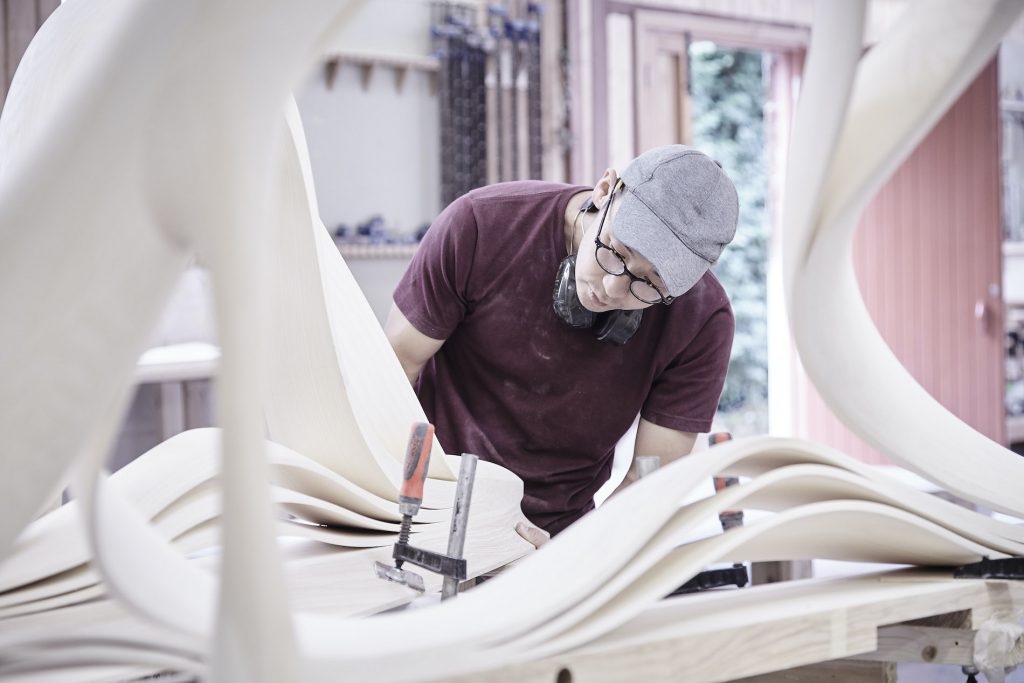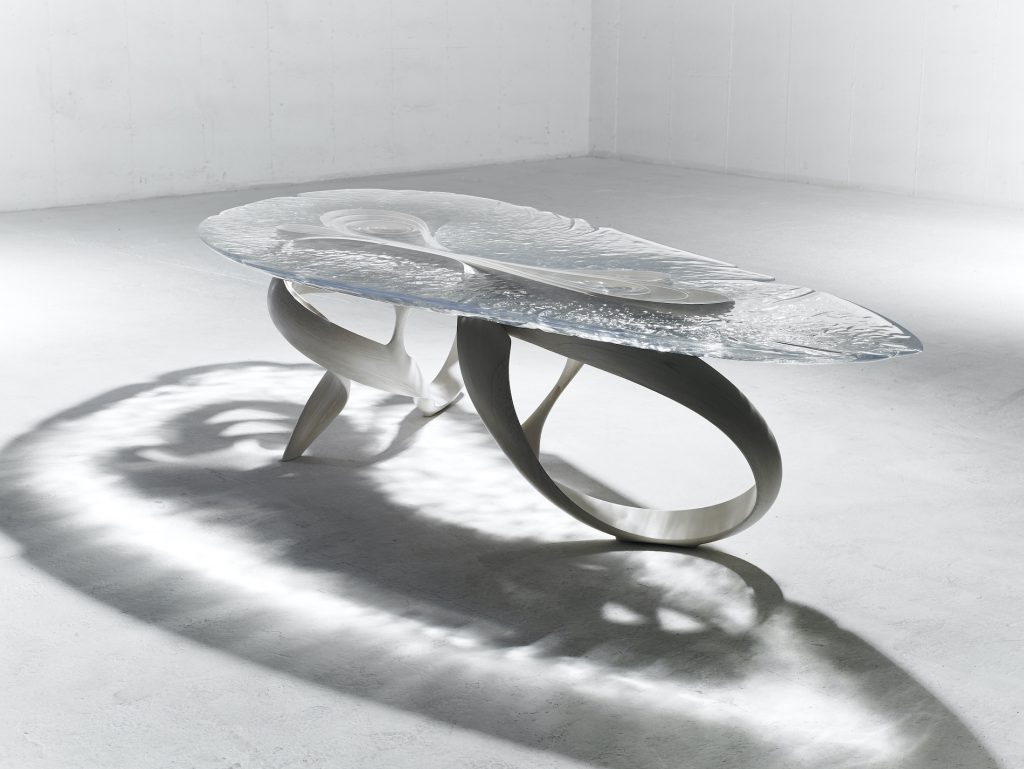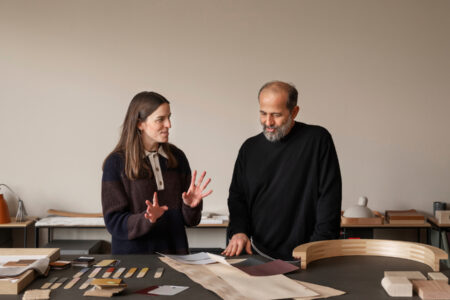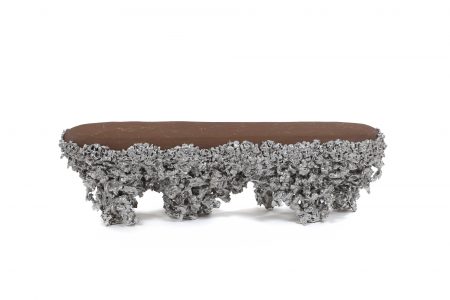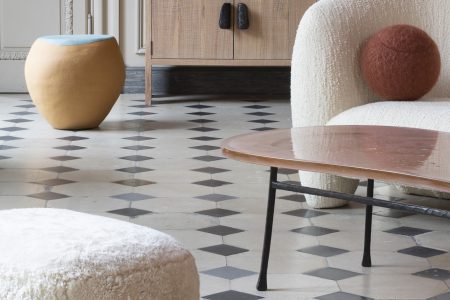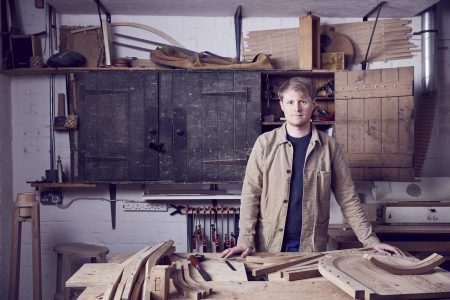
Joseph Walsh: Poetics of Space
From his studio in Cork, Irish designer Joseph Walsh uses traditional olive ash and limestone to create sculptures and furniture that appear to soar and float, defying their materiality, and in some cases, gravity.
From his studio in Cork, Irish designer Joseph Walsh uses traditional olive ash and limestone to create sculptures and furniture that appear to soar and float, defying their materiality, and in some cases, gravity.
TLmag: How did you become interested in designing furniture?
Joseph Walsh: I grew up on the family farm in Cork, where growing, making, repairing was part of daily life. When I was 12, I undertook the making of a traditional Irish dresser, and designed my version based on aspects I liked from various versions around the country. I had a book on the different styles of vernacular Irish furniture from the regions. It took me six months to complete.
TLmag: In 2019, your studio hosted “Making In,” a design conference that takes place annually in Cork, Ireland and which explores the concept of “making” by bringing together designers, architects, and artists from varied traditions to discuss their production process. Tell us about this event.
JW: Now in its third year, the “Making In” 2019 programme featured some of the most profound and exciting voices in international design including Charles Renfro from Diller Scofido & Renfro (whose work includes the High Line and Lincoln Center for the Performing Arts redevelopment, NYC), Sheila Lowe, (President of the LOEWE Foundation) and Christian Larson, (Associate Curator of Modern Decorative Arts and Design at the Metropolitan Museum of Art).
The programme’s intention is to share international perspectives and to stimulate and challenge the culture of making in Ireland. In a world where people increasingly seek connections to the objects they surround themselves with, and where there is access to global design and new technologies, this seminar seeks to examine our past and debate our future as we mark our place in time with the objects we create and live with.
TLmag: What are the important benefits of technology in the design work? What are some of the drawbacks?
JW: Technology allows the boundaries to be pushed and also helps further explore the limits of the materials. For instance, my large monumental pieces such as Magnus V and Magnus Modus, relied heavily on technology and engineering to help understand the pressure points and identifying a way to overcome limitations of the space. In this case technology enabled the design to fully express itself.
One must keep the benefits in perspective and not become overly reliant on technology in the design and making process. It is a tool which aids the fulfilment of the design but shouldn’t interfere with the inherent creativity.
TLmag: Is the definition of handcraft and handmade evolving? What are the perimeters?
JW: I think the definition is evolving as with many things. In the past, handmade was the only option, but the pursuit of efficiency though the industrial and now digital ages presents many more options. Today, handmade is very much a choice. There are many different types of handmade and the difference sometimes is subtle or great, but there are consequences to choices. To my mind, the handmade speaks of connection, connection to people. We hold objects or touch them with our hand and when we speak of handmade we speak of a proximity to the hand and mind that brought the object into being.
http://www.josephwalshstudio.com/
@josephwalshstudio
https://www.sarahmyerscough.com/
@ sarah_myerscough_gallery
This is a republished article from TLmag32 extended.
